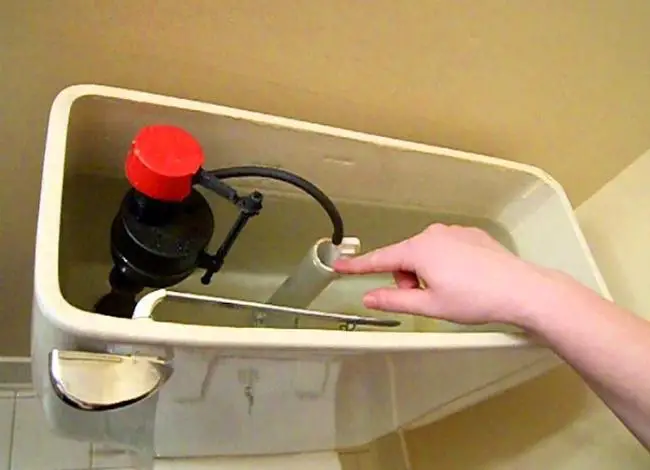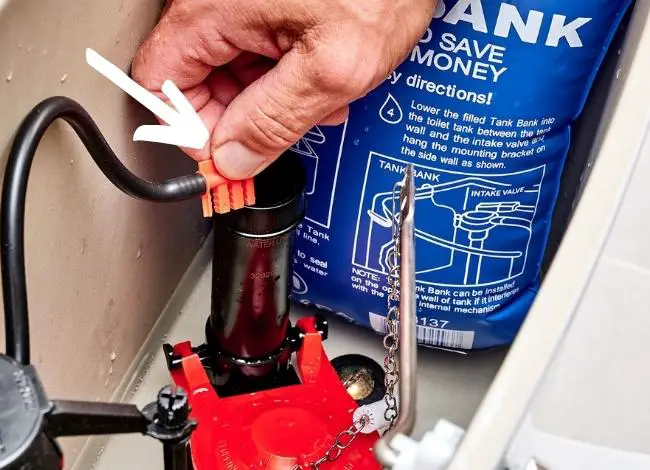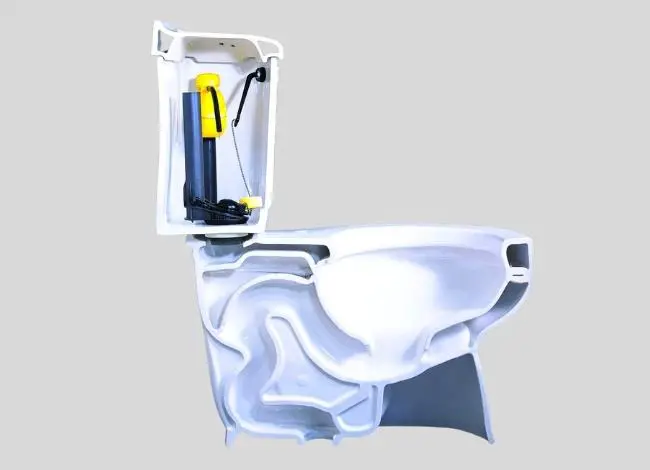Water is one of the most valuable resources on earth, and in today’s world of rising demand and limited supply, managing how we use it is more important than ever. Inside the average household, one of the biggest contributors to water usage is the toilet. According to the U.S. Environmental Protection Agency (EPA), older toilets manufactured before the 1990s could consume as much as 3.5 to 7 gallons per flush (GPF), wasting thousands of gallons of water each year.
Thanks to advancements in technology and stricter regulations, modern toilets now use significantly less water without sacrificing performance. High-efficiency models, particularly those with the WaterSense certification, use just 1.28 GPF. This represents a major improvement in water conservation and can save families thousands of gallons annually.
The term toilet water flow rate often comes up when discussing efficiency, but what does it really mean? Simply put, it measures how much water flows through a toilet during operation—whether that’s per flush (GPF), per minute (GPM), or per hour (GPH). These units not only indicate how efficient your toilet is but also help identify potential problems such as leaks, overflows, or low pressure.
Why is this important? Because toilets account for nearly 30% of residential indoor water use in the United States alone. By paying attention to the toilet water flow rate, homeowners can lower utility bills, comply with EPA standards, and most importantly, contribute to global water conservation efforts.
In this article, we’ll explore the details of toilet water flow rate, explain the differences between GPF, GPM, and GPH, show you how to measure your own toilet’s flow rate, and discuss ways to improve efficiency while staying eco-friendly.
Understanding Toilet Water Flow Rate and Its Measurements
When we talk about toilet water flow rate, we are essentially describing how much water passes through a toilet system during its operation. Different measurements are used to define this flow depending on whether we are looking at flushing performance, water supply, or leak detection. The three most common measurements are Gallons Per Flush (GPF), Gallons Per Minute (GPM), and Gallons Per Hour (GPH).
What Is GPF?
GPF (Gallons Per Flush) is the most widely recognized unit for evaluating toilet efficiency. It measures how much water is used every time you flush.
- Older Toilets (before 1994): Used 3.5–7 GPF, consuming huge amounts of water.
- Federal Standard (since 1994): Limited to 1.6 GPF.
- WaterSense Toilets (modern standard): Use 1.28 GPF or less.
The difference may not sound large, but over the course of a year, the savings are substantial. A family of four can save up to 13,000 gallons of water annually by switching from a 3.5 GPF toilet to a 1.28 GPF WaterSense-certified toilet. This makes GPF the most important indicator when choosing a new toilet.
What Is GPM?
GPM (Gallons Per Minute) measures how many gallons of water flow into the toilet from the supply line each minute. While it’s not the primary efficiency rating for toilets, it becomes important when measuring the refill rate of the tank or diagnosing plumbing issues.
- Standard toilet refill flow: 2–3 GPM
- EPA & HET toilets: Designed to regulate GPM while ensuring effective flushing.
In commercial and industrial environments, where multiple toilets may run at once, GPM is often the preferred measurement because it gives a clearer picture of large-scale water consumption.
What Is GPH?
GPH (Gallons Per Hour) indicates how much water flows through a toilet system in one hour. While rarely used to describe flushing performance, it is critical for identifying leaks or running toilets.
- A slow leak may waste 120–200 GPH, which equals 3,000–4,800 gallons per day.
- This not only spikes utility bills but also puts stress on municipal water systems.
WaterSense-labeled toilets are tested to minimize these losses, ensuring that even if left idle, they won’t continuously drain resources.
Why These Units Matter
Each unit of measurement—GPF, GPM, and GPH—offers a different perspective on the toilet water flow rate:
- GPF = How much water is used per flush.
- GPM = How quickly water flows into the toilet.
- GPH = How much water might be wasted or consumed over time.
Together, these measurements help homeowners, plumbers, and regulators evaluate whether a toilet is efficient, wasteful, or in need of repair.
How to Measure and Determine Your Toilet Water Flow Rate
Knowing the exact toilet water flow rate is important for identifying whether your toilet is operating efficiently or wasting water. Fortunately, you don’t need advanced plumbing tools to measure it. With a few simple techniques, you can get a reliable estimate of your toilet’s performance.
1. The Bucket Method
The bucket method is the most straightforward way to measure water flow:
- Take a bucket with a known capacity, such as 10 or 20 liters.
- Disconnect the toilet’s water supply hose and let it flow into the bucket.
- Record how long it takes to fill the bucket completely.
- Apply the formula:
Flow Rate=Water VolumeTime Taken\text{Flow Rate} = \frac{\text{Water Volume}}{\text{Time Taken}}
For example, if a 20-liter bucket fills in 2 minutes, the flow rate is 10 liters per minute, which equals about 2.65 gallons per minute (GPM). This tells you the rate at which water enters the toilet tank.
2. Measuring Gallons Per Flush (GPF)
To measure the GPF, which is the most critical unit of toilet water flow rate, you need to check the tank capacity:
- Shut off the water supply.
- Flush the toilet to empty the tank.
- Refill the tank manually using a measuring container (gallon jug or liter bottle).
- Record the total volume needed to fill the tank back to its normal water line.
That number represents the GPF of your toilet. For instance, if it takes 1.28 gallons to refill the tank, your toilet uses 1.28 GPF.
3. Monitoring With the Water Meter
If your home has a water meter, you can measure toilet usage directly:
- Turn off all water-using appliances (showers, faucets, washing machines).
- Flush the toilet once.
- Observe the water meter reading before and after the flush.
- The difference is the toilet’s GPF.
This method provides highly accurate results, especially if you want to test multiple toilets in a building.
4. Using Smart Water Devices
Modern technology makes it easier than ever to track water usage. Smart water monitors such as Moen Flo, Phyn Smart Water Assistant, or StreamLabs can connect to your home’s plumbing system and track flow rates in real time.
- These devices can detect unusual water use, such as leaks or running toilets.
- They provide hourly and daily reports, giving you a clear picture of your toilet water flow rate.
- Some models even allow remote monitoring via smartphone apps.
This method is especially useful in households with multiple toilets or in commercial settings where water consumption is high.
5. Professional Testing
If you suspect inefficiency but don’t want to test yourself, a licensed plumber can conduct a flow rate assessment. Professionals often use digital flow meters to measure GPF, GPM, and GPH with precision. This can be worthwhile if your water bills are unusually high or if you want to comply with state water conservation codes.
How to Reduce Toilet Water Flow Rate Without Compromising Efficiency
Once you know your toilet’s water flow rate, the next step is to optimize it. A toilet that uses too much water per flush or has a constant leak can waste thousands of gallons annually, increasing both your water bill and your environmental footprint. The good news is that there are proven methods to reduce the toilet water flow rate without sacrificing flushing power.
1. Replace or Adjust the Flapper Valve
The flapper valve controls how water leaves the tank during a flush. If it’s worn out or damaged, it may release too much water or cause leaks.
- Solution: Replace the flapper with a high-quality, water-saving model. Many modern flappers are designed to close more quickly, preventing excess water from flowing into the bowl.
- Impact: A simple replacement can save hundreds of gallons per month.
2. Check and Adjust the Tank Water Level
If the tank fills above the recommended line, the toilet will use more water than necessary with every flush.

- Older toilets: Use a float ball to control the water level—bend the rod slightly to lower the float.
- Modern toilets: Have a float cup or electronic sensor that can be adjusted.
By keeping the water at the correct level, you reduce the GPF (Gallons Per Flush) without affecting performance.
3. Install a Fill Cycle Diverter
During flushing, water is directed both into the bowl and back into the tank. Often, the bowl fills faster than the tank, wasting water.

- Solution: Install a fill cycle diverter, a small, inexpensive device that redirects water to the tank once the bowl is full.
- Imfill pact: Saves up to half a gallon per flush.
4. Upgrade to a Low-Flow or Dual-Flush Toilet
If your toilet is more than 20 years old, upgrading may be the best solution.

- Low-flow toilets (WaterSense-certified): Use just 1.28 GPF, saving thousands of gallons yearly.
- Dual-flush toilets: Allow you to choose between a partial flush (0.8–1.1 GPF) for liquid waste and a full flush (1.6 GPF) for solid waste.
This flexible system can reduce household toilet water usage by up to 67%.
5. Fix Leaks Promptly
A running toilet is one of the most common causes of excessive water consumption. Even a small leak can waste 200 gallons per day.
- Test for leaks: Add a few drops of food coloring to the tank and wait 15 minutes without flushing. If color appears in the bowl, there’s a leak.
- Solution: Replace worn-out flappers, seals, or fill valves immediately.
6. Consider Tank Inserts or Displacement Devices
If replacing your toilet isn’t an option, tank inserts can help reduce the water volume per flush.
- Options include weighted bags, plastic bottles filled with water, or manufactured displacement devices.
- These reduce tank capacity, lowering the toilet water flow rate without noticeable performance loss.
7. Regular Maintenance and Cleaning
Mineral deposits, dirt, or worn parts can affect the efficiency of your toilet. By regularly cleaning and maintaining the flush system, you ensure smooth operation at the designed flow rate.
Why Reducing Flow Rate Matters
Lowering the toilet water flow rate benefits homeowners and the environment:
- Financial savings: Reduced water bills.
- Environmental impact: Conserves fresh water.
- Compliance: Meets EPA and local water conservation regulations.
Even small changes, like adjusting the water level or installing a diverter, can lead to significant yearly savings.
EPA Standards, WaterSense Certification, and Toilet Brands
When it comes to conserving water through plumbing fixtures, no organization has had a bigger impact than the Environmental Protection Agency (EPA). Recognizing that toilets accounted for nearly 30% of indoor household water use, the EPA launched the WaterSense program in 2006. This initiative set new efficiency standards and provided consumers with a reliable way to identify water-saving toilets without sacrificing performance.
EPA Standards for Toilets
The EPA requires that toilets meet strict guidelines before they can be labeled as efficient:
- Maximum Flush Volume: Toilets must use no more than 1.28 gallons per flush (GPF).
- Performance Testing: Toilets must remove waste effectively in a single flush. Efficiency should never compromise flushing power.
- Leak Prevention: Products must be designed and tested to minimize leaks that increase toilet water flow rate unnecessarily.
- Durability Requirements: Toilets must demonstrate long-term reliability and performance under repeated use.
These standards have pushed manufacturers to innovate with improved bowl designs, pressure-assisted flush systems, and dual-flush mechanisms.
WaterSense Certification
The WaterSense label is a symbol consumers can trust. Toilets with this label:
- Use 20% less water than the federal 1.6 GPF standard.
- Are independently tested and certified for both performance and efficiency.
- Help households save an average of 13,000 gallons of water per year.
- Reduce utility costs by lowering both water and energy bills (since less hot water is used overall).
In many U.S. states, installing WaterSense toilets is required in new construction and renovations. Additionally, some municipalities even offer rebates to homeowners who replace older, high-flow toilets with certified WaterSense models.
States with Strict Regulations
Several U.S. states have gone beyond federal standards:
- California & Texas: Ban the sale of toilets that use more than 1.28 GPF.
- Colorado & New York: Recently passed laws restricting toilets to high-efficiency models only.
- Nevada & Georgia: Encourage WaterSense adoption with rebates and building code incentives.
This shows a nationwide trend toward reducing toilet water flow rate and aligning with sustainability goals.
Leading Toilet Brands That Meet EPA & WaterSense Standards
Several top manufacturers consistently deliver WaterSense-certified toilets that balance performance, comfort, and efficiency:
- Toto: Known for advanced flushing technologies like Tornado Flush and innovative eco-friendly designs. The Toto Drake and Toto Ultramax II are popular WaterSense options.
- Kohler: Offers stylish, high-performing WaterSense toilets such as the Cimarron and Wellworth models. Kohler emphasizes powerful flushing with reduced water use.
- American Standard: A trusted brand in the U.S., producing affordable yet reliable high-efficiency toilets. Models like the Cadet 3 and H2Option are WaterSense-certified.
- Gerber: Known for commercial-grade performance combined with residential efficiency. Their Viper and Avalanche lines meet WaterSense standards.
- Duravit & Villeroy & Boch: European brands focusing on sustainable design, increasingly popular in eco-conscious households.
Why Brand Choice Matters
Not all toilets are created equal, even when they meet efficiency requirements. Choosing a reliable brand ensures:
- Consistent toilet water flow rate that balances low consumption with strong flush performance.
- Long-term durability with fewer leaks or repairs.
- Access to replacement parts and customer support.
By opting for a reputable brand with WaterSense certification, homeowners not only save water but also ensure comfort and peace of mind.
Conclusion – Why Toilet Water Flow Rate Matters
The toilet water flow rate may seem like a small detail in your home’s plumbing system, but its impact is far greater than most people realize. Toilets account for nearly one-third of indoor household water use, and inefficient models can waste thousands of gallons of clean water every year. By understanding and managing flow rate, homeowners can save money, conserve resources, and contribute to a more sustainable future.
Key Takeaways
- GPF (Gallons Per Flush): The most important measurement, showing how much water is used with each flush. Modern WaterSense toilets are rated at 1.28 GPF or less, while older models use up to 7 GPF.
- GPM (Gallons Per Minute): Indicates how quickly water flows into the tank. Standard toilets average 2–3 GPM, with efficiency models carefully regulating the rate.
- GPH (Gallons Per Hour): Useful for identifying leaks or running toilets, which can waste hundreds of gallons per day.
- EPA & WaterSense Standards: Provide assurance that a toilet balances efficiency and performance, with some states legally requiring WaterSense models in new installations.
- Efficiency Upgrades: Simple fixes like replacing the flapper valve, installing a fill cycle diverter, or upgrading to a dual-flush toilet can significantly reduce household water usage.
The Environmental and Financial Benefits
Reducing toilet water flow rate has a twofold impact:
- Environmental Conservation: Freshwater is a limited resource. By switching to a WaterSense-certified toilet, a family can save 13,000+ gallons per year, easing pressure on municipal systems and preserving water for future generations.
- Lower Bills: Less water consumption means lower utility costs. Over the lifespan of a toilet, the savings can add up to hundreds of dollars.
Why It Matters in the Modern World
As global populations rise and droughts become more frequent, efficient water management is no longer optional—it is essential. Every household that reduces its toilet water flow rate is part of a larger solution to protect our planet’s most precious resource.
From choosing a reliable brand like Toto, Kohler, or American Standard, to performing regular maintenance, homeowners have many tools available to optimize water usage. Even small actions, like fixing a leak or adjusting the tank’s water level, can make a noticeable difference.
Final Thoughts
The toilet water flow rate is more than just a technical measurement—it’s a reflection of how responsibly we use water in our daily lives. By staying informed, upgrading to efficient models, and maintaining toilets properly, we can all contribute to saving water, reducing costs, and building a more sustainable future.
So, the next time you consider a bathroom upgrade or notice a running toilet, remember: paying attention to the toilet water flow rate is not only good for your wallet but also vital for the environment.
Hi, this is Robert Crossan, the owner of this website, has 17 years of experience in the installation, maintenance, and repair of toilets and plumbing systems. After completing the Level 2 Basic Plumbing course in 2005, I started working in both domestic and commercial buildings as a professional plumber. So I can figure out the core difference between different toilet models and brands. It also helped me monitor their work performance and setbacks.